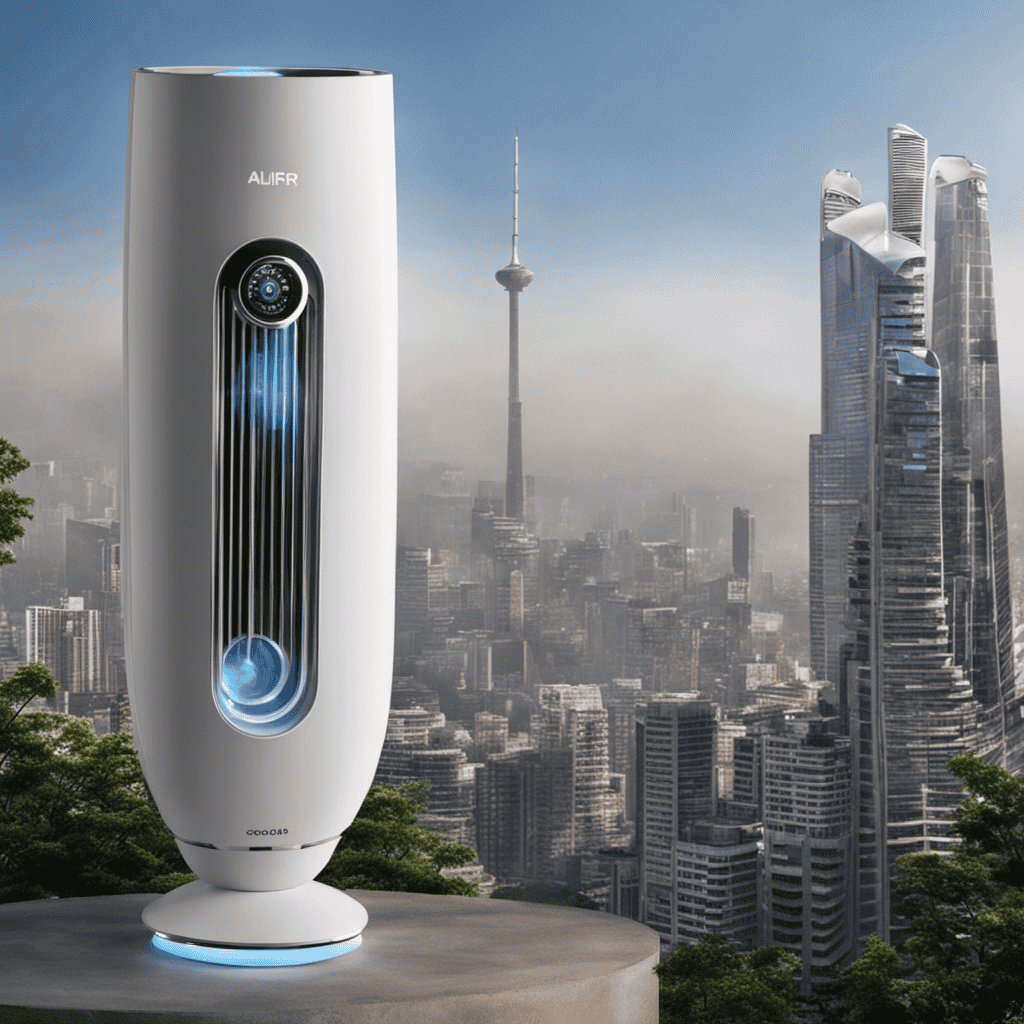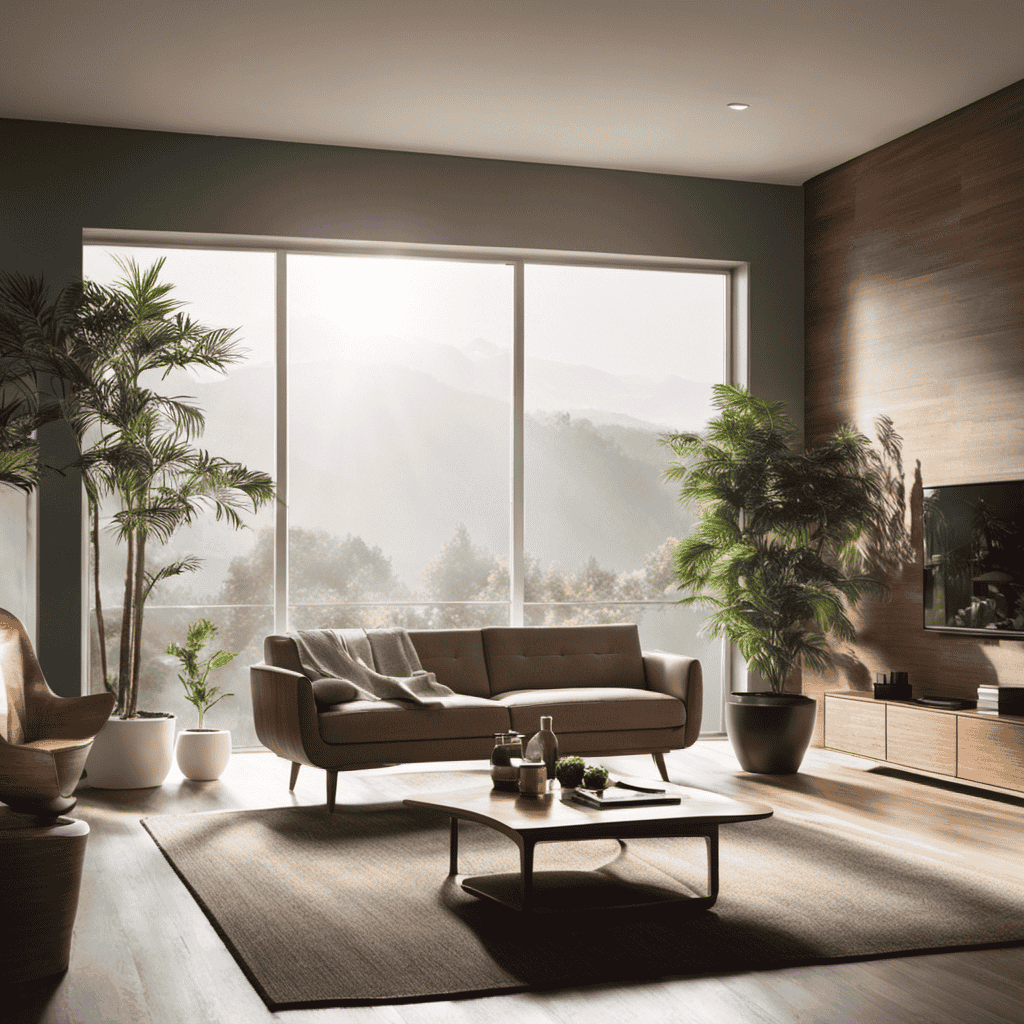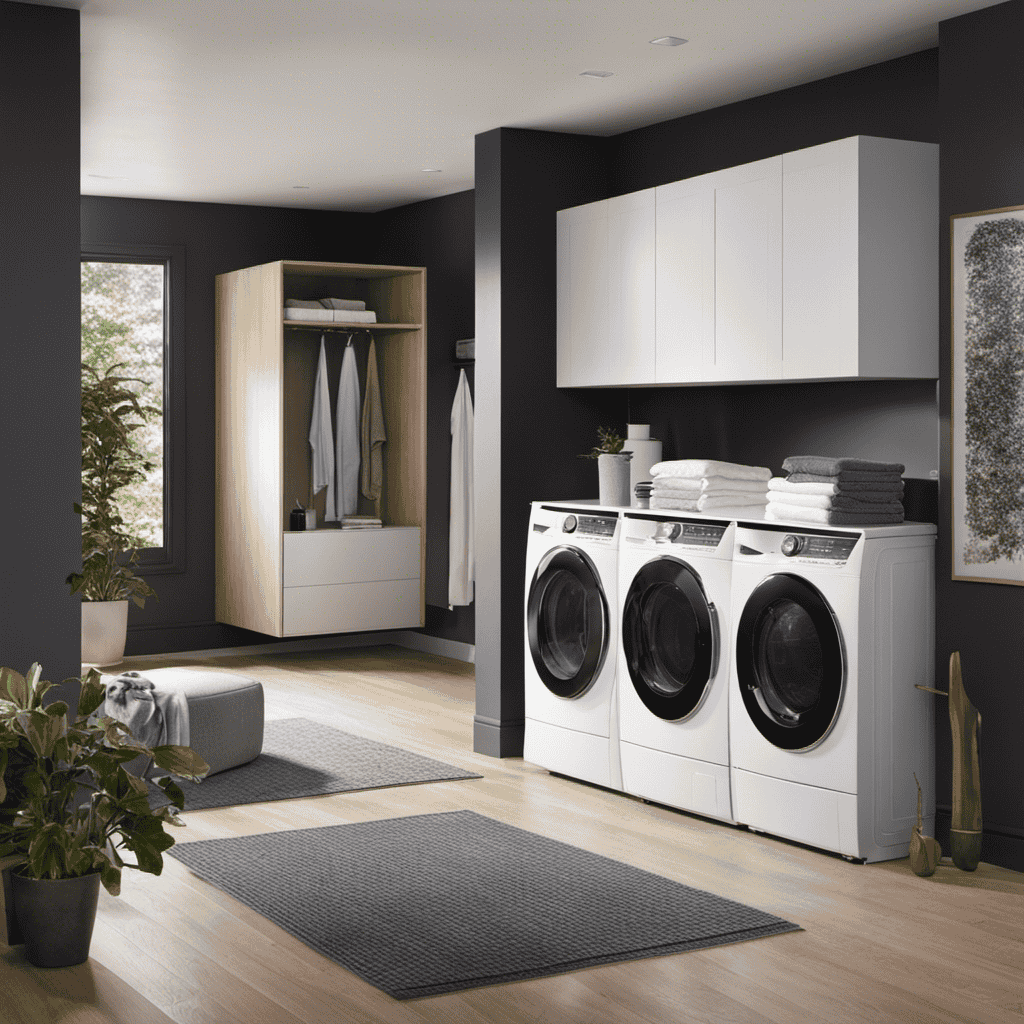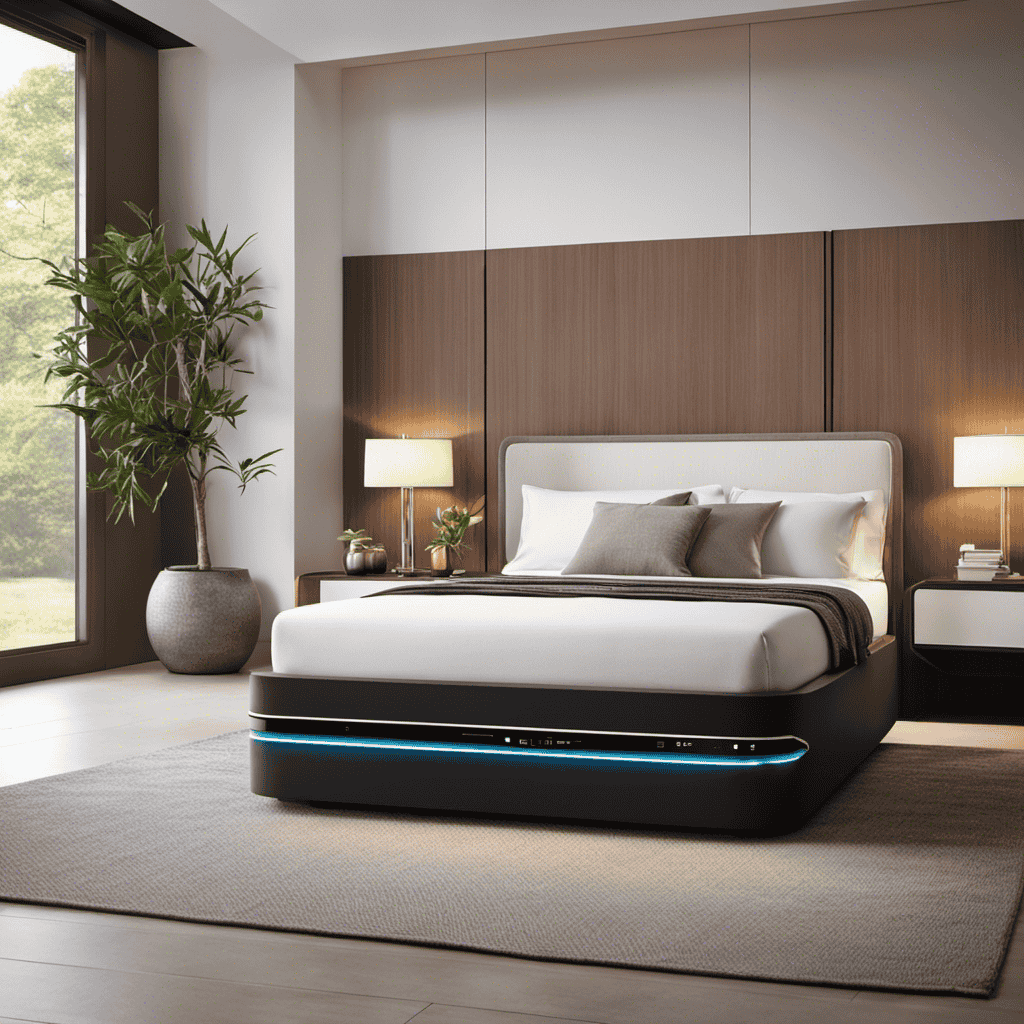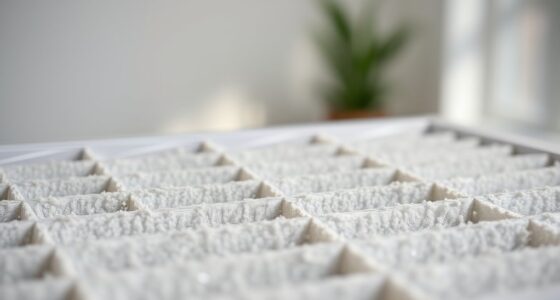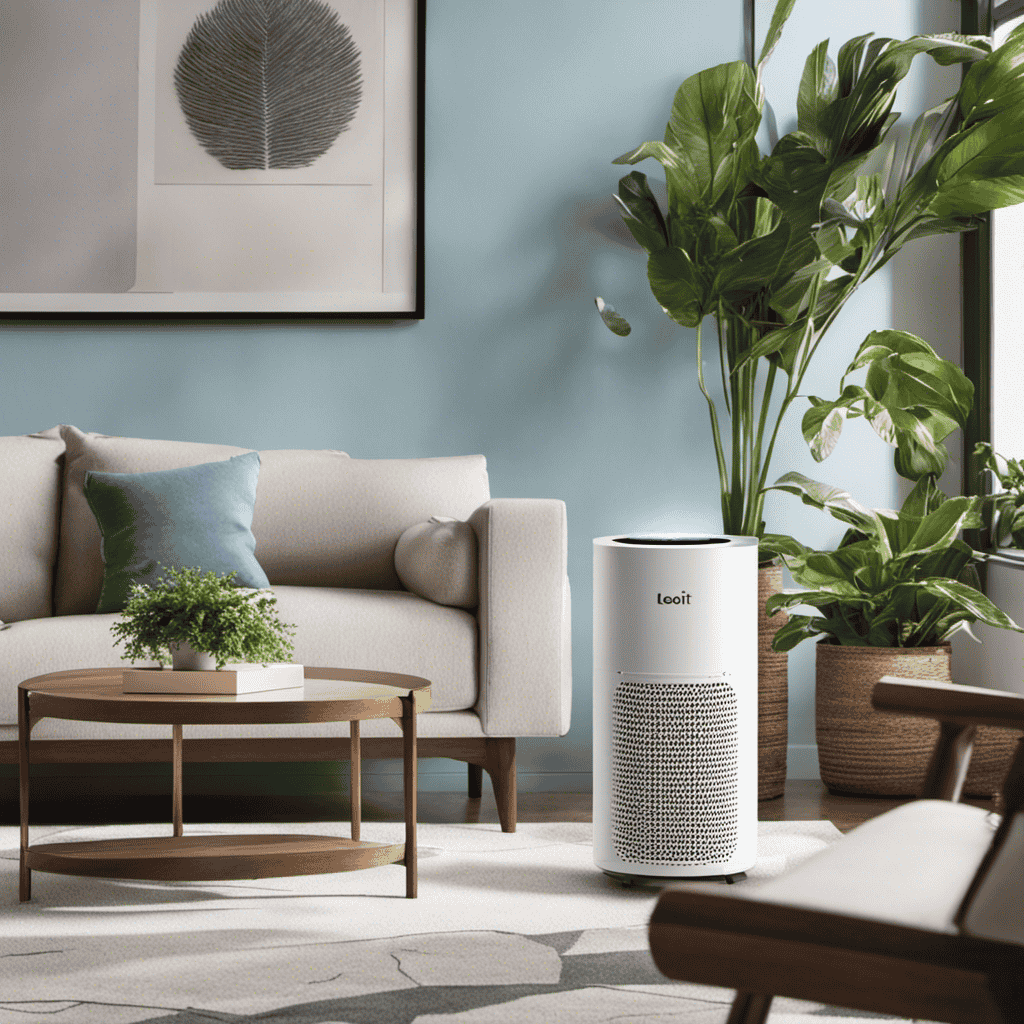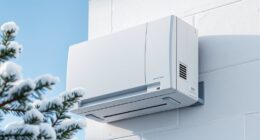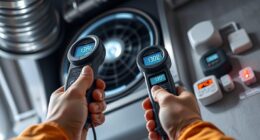As an avid advocate for clean and healthy air, I am excited to share with you the comprehensive guide on how to use a personal air purifier.
In this article, we will delve into the world of air purification technology, discuss the different types of purifiers available, and provide step-by-step instructions on setting up and operating your device.
Whether you’re a seasoned air purifier user or a beginner, this article will equip you with the knowledge and skills needed to maximize the efficiency of your personal air purifier.
So, let’s dive in and start breathing cleaner air today!
Key Takeaways
- Choose a personal air purifier with an appropriate size for effective air cleaning.
- Look for air purifiers with HEPA filters to effectively trap particles.
- Consider the maintenance required for the air purifier.
- Select a personal air purifier suitable for the size of the room.
Choosing the Right Personal Air Purifier
To choose the right personal air purifier, you’ll want to consider its size and filtration capabilities. When it comes to air purifier features, there are a few key aspects to look for.
Firstly, consider the size of the unit. You want the purifier to be able to effectively clean the air in your space, so make sure it is suitable for the size of the room you will be using it in.
Secondly, pay attention to the filtration capabilities. Look for purifiers with HEPA filters, as they are highly efficient at trapping particles like dust, pollen, and pet dander.
Additionally, consider the maintenance required for the air purifier. Some models have filters that need to be replaced regularly, while others have washable filters. Choose one that fits your lifestyle and preferences.
Understanding the Different Types of Air Purification Technology
Take a moment to familiarize yourself with the various types of air purification technology available. When it comes to personal air purifiers, understanding the different options can help you make an informed decision.
There are several types of air purification technologies, each with its own benefits and drawbacks. The most common types include HEPA filters, activated carbon filters, ionizers, and UV germicidal lamps.
HEPA filters are highly effective at removing airborne particles, while activated carbon filters excel at eliminating odors and chemicals. Ionizers release negative ions to neutralize pollutants, while UV germicidal lamps kill bacteria and viruses.
Comparing these technologies can help you choose the right air purifier for your needs. Personal air purifiers provide numerous benefits, such as improving indoor air quality, reducing allergy symptoms, and eliminating harmful pollutants.
With the right air purification technology, you can breathe cleaner and healthier air.
Setting Up Your Personal Air Purifier
When it comes to setting up your personal air purifier, there are a few key points to consider for maximum effectiveness.
First, proper placement is crucial. It is important to position the air purifier in an area where it can efficiently circulate the air and remove pollutants.
Additionally, it is essential to be mindful of the filter replacement frequency to ensure optimal performance. Regularly changing the filters as recommended by the manufacturer will help maintain the air purifier’s efficiency and effectiveness.
Lastly, noise level considerations should not be overlooked. Some air purifiers can generate significant noise, especially when operating at higher speeds. Choosing a model with adjustable fan speeds can help minimize disruption while still maintaining a clean and healthy environment.
Placement for Maximum Effectiveness
Position your personal air purifier near the main source of indoor air pollution, such as the kitchen stove or the living room carpet, for maximum effectiveness. To ensure optimal performance, consider the size of your air purifier and the direction of airflow. Larger air purifiers are suitable for larger rooms, while smaller ones are ideal for smaller spaces. Additionally, it is important to note the airflow direction of your purifier. Most air purifiers have a front-facing intake and a top or back-facing outlet. Therefore, placing the purifier with the front facing the source of pollution will allow it to capture the contaminants effectively. By strategically placing your air purifier and considering its size and airflow direction, you can enhance its efficiency in purifying the indoor air.
| Air Purifier Size | Suitable Room Size |
|---|---|
| Small | Up to 250 sq. ft. |
| Medium | 251-500 sq. ft. |
| Large | Over 500 sq. ft. |
Filter Replacement Frequency
To maintain optimal performance, it is crucial to be aware of how often you should replace the filter in your air purifier. Most air purifiers require filter replacements every 6 to 12 months, depending on the usage and the specific model. However, some filters may require more frequent replacements, especially if you live in an area with high pollution levels or if you have pets.
By following the recommended filter replacement schedule, you can ensure that your air purifier continues to effectively clean the air in your space. This is an important aspect of maintaining clean and fresh air.
Additionally, there are a few tips to prolonging the filter lifespan. Regularly cleaning the pre-filter and using the air purifier on lower fan speed settings can help reduce the strain on the main filter, thereby extending its life.
Noise Level Considerations
The noise level of an air purifier can vary depending on the fan speed and the specific model you choose. When considering an air purifier for quiet operation, it is important to pay attention to the sound level produced by the device.
The sound level is typically measured in decibels (dB). A lower decibel rating indicates a quieter operation. Many air purifiers are designed to operate at a low noise level, allowing you to enjoy clean air without any disturbance.
Some models even have a quiet mode, specifically designed to minimize noise output during operation. When selecting an air purifier, be sure to check the specifications for the decibel rating or look for the ‘quiet operation’ feature to ensure a peaceful and comfortable environment.
Proper Placement for Maximum Efficiency
For maximum efficiency, make sure you place the personal air purifier at a height that allows the clean air to circulate freely around you. This ensures optimal airflow and ensures that you receive the maximum benefits from your air purifier.
Here are some important considerations for proper placement and maintenance:
-
Placement:
-
Position the air purifier at a height of about 3-5 feet from the ground.
-
Place it in a central location within the room to ensure even distribution of clean air.
-
Maintenance:
-
Regularly clean and replace the filters as per the manufacturer’s instructions.
-
Keep the surrounding area clean to prevent dust and debris from affecting the purifier’s performance.
Operating and Adjusting the Settings of Your Air Purifier
When it comes to operating and adjusting the settings of your air purifier, there are several key points to consider.
First, understanding the optimal purification levels is crucial in order to effectively remove pollutants and allergens from the air.
Additionally, noise level considerations are important for maintaining a peaceful environment, especially during sleep or work.
Lastly, energy-saving features should be explained to maximize efficiency and reduce electricity consumption.
Optimal Purification Levels
To achieve optimal purification levels with your personal air purifier, make sure you adjust the settings according to your specific needs. This will ensure that you are getting the most out of your device and enjoying clean, fresh air.
Here are a few key tips to help you achieve optimal performance:
-
Monitor air quality indicators: Most air purifiers come with built-in air quality indicators that provide real-time information about the air in your environment. Pay attention to these indicators and adjust the settings accordingly. If the air quality is poor, increase the fan speed or activate the boost mode to maximize purification.
-
Customize the settings: Personal air purifiers often allow you to customize the settings based on your preferences. Experiment with different fan speeds, timer settings, and modes to find the perfect balance between purification and noise levels. Adjusting these settings will ensure that you are getting the best performance out of your air purifier.
Noise Level Considerations
Finding the perfect balance between fan speed and noise levels is essential for considering the noise level of your air purifier. When it comes to air purifiers, noise can be a major concern, especially if you plan on using it in your bedroom or any other space where silence is crucial.
Thankfully, there are soundproofing options available to help minimize the noise produced by your air purifier. One option is to place the purifier on a rubber mat or foam padding to absorb vibrations and reduce noise transmission. Another option is to use soundproof curtains or acoustic panels to create a barrier between the purifier and the rest of the room.
It’s important to keep in mind that excessive noise can have an impact on sleep quality, so finding the right balance between purification power and noise levels is key for a good night’s rest.
Energy-Saving Features Explained
Energy-saving features are important to consider when choosing an air purifier for your home. Not only do they help reduce electricity consumption, but they also contribute to a greener and more sustainable environment. Here are two key energy-saving features to look for:
-
Automatic shut-off: This feature allows the air purifier to automatically turn off when the air quality reaches a desired level. By not running constantly, it helps save energy and prolongs the lifespan of the unit.
-
Energy-efficient fan: Look for air purifiers with energy-efficient fans that consume less electricity while still providing effective air purification. These fans are designed to operate at lower speeds, reducing power consumption without compromising on performance.
Maintenance and Cleaning Tips for Your Personal Air Purifier
Make sure you regularly clean the filters of your personal air purifier to maintain its effectiveness. Cleaning the filters is an essential part of the maintenance schedule for your device.
There are different cleaning techniques you can use depending on the type of filter your air purifier has. For a pre-filter, you can simply vacuum or rinse it to remove large particles.
For a HEPA filter, it is recommended to gently vacuum it or wash it with water and let it dry completely before reinserting it.
The activated carbon filter can be replaced according to the manufacturer’s instructions.
It is important to follow the recommended maintenance schedule to ensure that your air purifier is running efficiently and providing you with clean and fresh air.
Troubleshooting Common Issues With Personal Air Purifiers
When troubleshooting common issues with your device, start by checking if the power cord is securely plugged in.
If the device still isn’t working properly, here are some other troubleshooting steps you can take:
-
Check the air filters:
-
Make sure the filters are clean and free from dust and debris.
-
Replace the filters if they are damaged or past their recommended lifespan.
-
Inspect the fan and motor:
-
Ensure that the fan is spinning freely and not obstructed by any objects.
-
Check the motor for any signs of overheating or unusual noises.
By following these troubleshooting steps, you can quickly identify and resolve common issues with your personal air purifier.
Frequently Asked Questions
How Much Electricity Does a Personal Air Purifier Consume?
The electricity consumption of a personal air purifier depends on its size, settings, and usage duration. It is important to consider the energy usage of the device to ensure efficient operation and minimize environmental impact.
Can a Personal Air Purifier Remove Odors From the Air?
Yes, a personal air purifier can effectively remove odors from the air. By utilizing advanced filtration technology, it captures and eliminates household odors, leaving the air fresh and clean.
Are Personal Air Purifiers Safe for Use Around Children and Pets?
Personal air purifiers are generally safe for use around children and pets, but it’s important to consider certain safety concerns. Additionally, their effectiveness varies depending on the type of pollutants they are designed to remove.
Can a Personal Air Purifier Help With Allergies and Asthma Symptoms?
Yes, a personal air purifier can be effective in reducing allergy and asthma symptoms. Using one can help remove allergens and irritants from the air, providing relief and improving air quality.
Can a Personal Air Purifier Eliminate Mold and Mildew Spores From the Air?
Yes, a personal air purifier can eliminate mold and mildew spores from the air, preventing respiratory issues. By effectively removing airborne contaminants, it ensures cleaner and healthier air for breathing.
Conclusion
In conclusion, using a personal air purifier is a simple yet effective way to improve the quality of the air you breathe.
With various types of air purification technology available, it is important to choose the right one that suits your needs.
Proper placement and regular maintenance are crucial to ensuring maximum efficiency.
Did you know that indoor air can be up to five times more polluted than outdoor air? This shocking statistic highlights the importance of investing in a personal air purifier to protect your health and well-being.
So why wait? Take control of your indoor air quality today!
